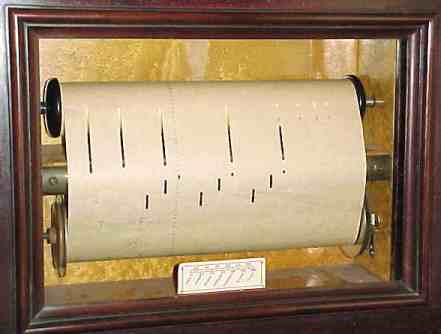Breakthrough!
During the Xmas break I'd been trying to work out where to go next with my MA research work. After quickly hitting a number of dead ends, I'd started to despair that I would ever find a next step.
And then ... Bam! Eureka! The Government Art Collection came to my rescue with, of all things, a pianola...
Government Art Collection
This exhibition, at Birmingham Art Gallery, covers 200 works of art over a very wide range of periods. To describe it as eclectic would be an understatement.
At the centre of the exhibition is a colour-themed room entitled Richard of York Gave Battle in Vain, featuring works arranged in colour groups by Cornelia Parker. At the doorway hangs a Peter Blake screenprint of the Beatles.
Nearby, contrasting well with the sour-faced Lady Anne Motagu, stands a stunning portrait of Lady Ada Byron (a.k.a. Ada Lovelace) by Margaret Carpenter, which used to hang at No. 10, Downing Street. The image encapsulates both intelligence and beauty, and reflects Lady Ada's prominence and importance as the world's first computer programmer.
Pianola!
Pretty much all the exhibits were paintings, photographs or small sculptures ... except one. This one was noisy and wonderful!
4'33" (Prepared Pianola for Roger Bannister) by Mel Brimfield was commissioned for this collection and certainly grabs attention.
It started with a crash of cymbals & bang of drums, and proceeded to draw a crowd in the small Gas Hall gallery. What was really interesting was the reaction of the kids ... kids who have grown up watching Thor and The Hulk duke it out with aliens, and mobile phones that let you wander virtually down a street in another country ... absolutely bewitched by a piano that plays itself.
This represented a perfect combination of nostalgia for parents (who, in most cases, would never have seen a pianola in the flesh but would be familiar with the concept from films & TV) and fascination for children.
The music roll, with its perforated holes, represents the list of instructions for this programmable 19th Century music machine, with a heritage going back to the Jacquard Loom -- striking in its (unintended?) juxtaposition with the portrait of Ada Lovelace in the same gallery.
For a generation of kids who are used to singing & dance video games, like Rock Band and SingStar, this format of moving lines & dots of instructions is totally familiar.
Is there a way to combine these? Can it be manipulated to form a nostalgia-tickling game that will appeal to a range of ages? And capture the magical affect experienced by those kids & adults in the gallery?
Following the enormous success of Minecraft, game developer Mojang have been working on 0x10c, a game based around computer programming. Devices like the Raspberry Pi may not have achieved their aims, but they've certainly got people talking about computer programming. There is a definite zeitgeist here.
A pianola-themed game will form the crux of my work over coming weeks as I seek to develop game mechanics which can exploit the notion of fun, interactive, programmable (music?) machines in a methodical and meaningful way.






